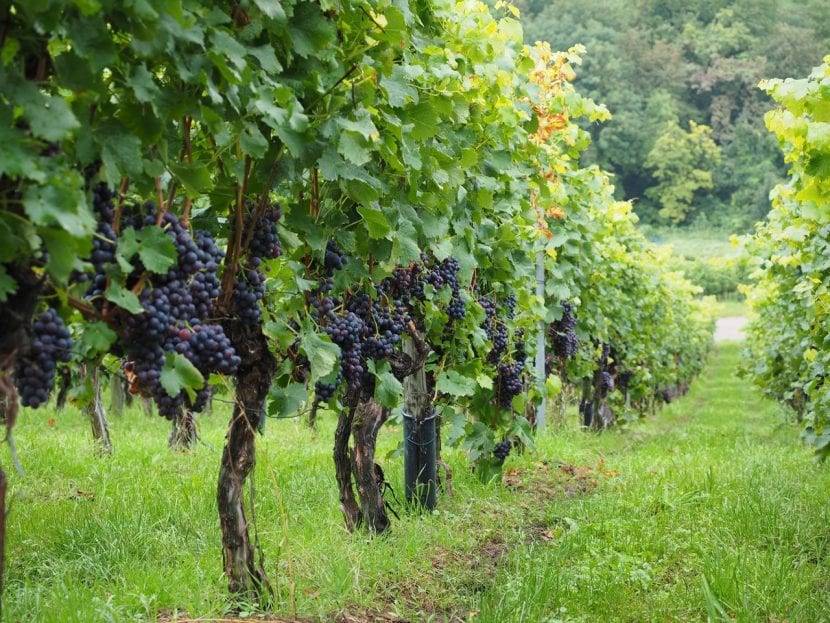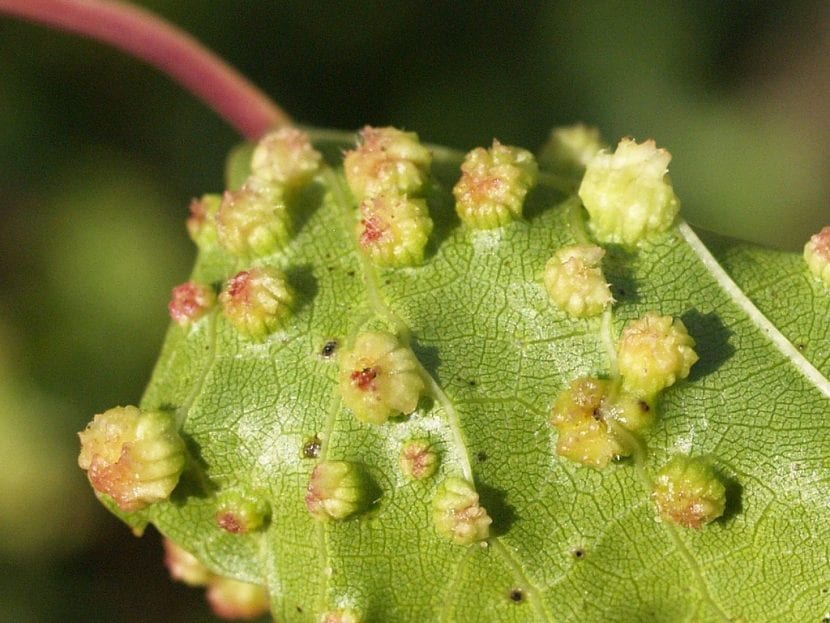
Plants that have some edible part are often the ones that end up having the most pests and diseases. There are a wide variety of insects, fungi, viruses and bacteria that affect them. The vine, the most popular climber during the Christmas holidays, has the misfortune of being very vulnerable to a species of aphid known as phylloxera.
This is a terrible plague that almost wiped out Malaga's vineyards in 1878. In spite of everything, we can acquire resistant rootstocks, but ... How can we know that our plant has phylloxera?
What is vine phylloxera?
The phylloxera of the vine, whose scientific name is viteus vitifoliae) is an aphid native to the United States, where it feeds on the leaves and roots of the American vine. His cycle on these plants is as follows:
- The egg overwinters in the bark of the plant.
- It hatches in March-April (Northern Hemisphere), appearing a larva.
- The larvae goes to the leaves and bites them on the underside, where a yellowish gall is formed, and lays up to 600 eggs.
- 10% of these eggs remain forming galls on the leaves (which would be neogallic-chicken aphids), while 90% migrate to the roots (neogallic-root aphids).
The phylloxeras descended from the roots hibernate in the roots until June, which become nymphs. Each female lays an egg in the crust, thus beginning a new cycle.
What are the symptoms / damage it causes?

The damages are, in most cases, very serious. We can see them in:
- Leaves: appearance of gills of a certain thickness, yellowish, on the underside.
- Roots: lumps in the form of knots or tuberosities that interrupt the sap currents.
During the first year we may not realize that it has it, but during the second, we will see how the edges of the leaves lose chlorophyll, that the fruits fall before ripening and that, finally, the plant dies due to rot from the roots.
Can it be prevented?
Fortunately, yes. Prevention consists of acquire European vine varieties on rootstocks resistant to phylloxera, like the Riparia, Rupestris or Berlandieri, either pure or hybridized.